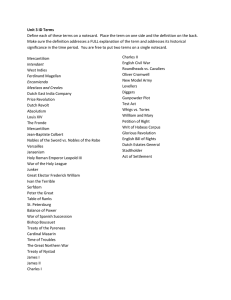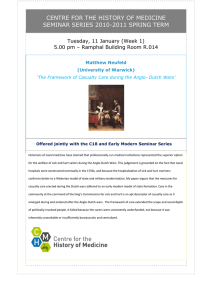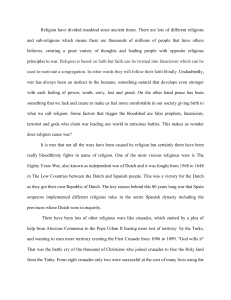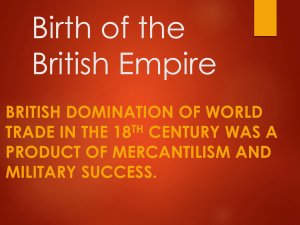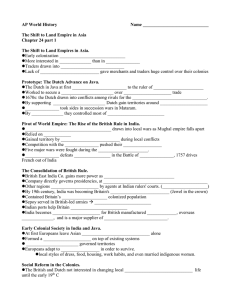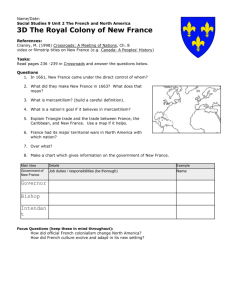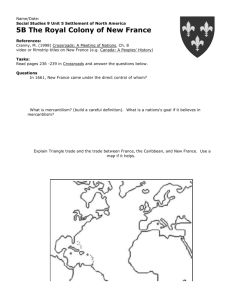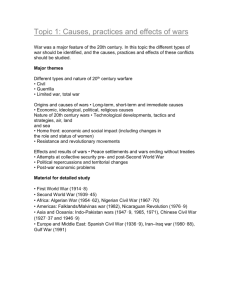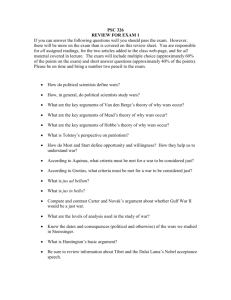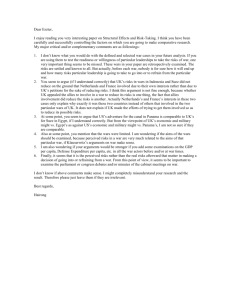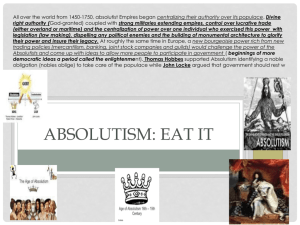The Commercial Revolution - Hinsdale Central High School
advertisement
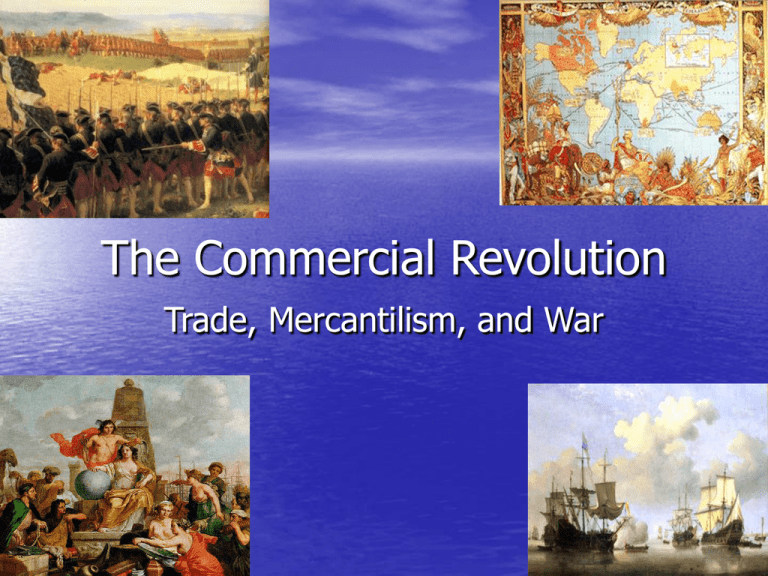
The Commercial Revolution Trade, Mercantilism, and War Definition • A rapid increase in global trade occurring in the seventeenth and eighteenth centuries involving new goods, new techniques, and new institutions. Mercantilism • 1. Real wealth is specie (i.e., • • hard money, gold and silver) 2. There is a natural scarcity of resources in the world. 3. Nations must maximize their exports and minimize their imports. – – – – – – Acquire colonies Set up trade monopolies Build navies/merchant marine Fight trade and colonial wars Erect high tariffs Build roads, canals, and subsidize key industries The Rise of the Dutch • Geographic—ideal location, center of textiles, protection from attack (dikes). • Economic—scientific agriculture, institutions (Bank of Amster., joint-stock comps., entrepot system), financial leaders, fluyts, rejected mercantilism • Social—mercantile elite, bourgeois influence, tolerant, Calvinist frugality • Political—decentralized authority, representative institutions (Estates-General) “An Embarrassment of Riches”: New Goods • Cloth—silks, cotton, • • calicoes Spices—pepper, mace, nutmeg, cinnamon, saffron, etc. Foods—sugar, tea, coffee, rum, molasses “The Inhuman Trade” • Begun by • • • • • • Portuguese in 15th century Taken over by Dutch Most went to New World “Middle Passage” Sugar plantations Mixing of cultures Racism “The Tasty and Bitter Fruits” • • • • • • Improved diet, standard of living, life expectancy Increase in size and power of middle class More resources for state in power drive Rise of global economy and geopolitics, European exploitation/dominance Constant but limited warfare, 1600-1763 Shift in balance of power to those nations that most efficiently organized resources Commercial Wars, 1600-1763 • Anglo-Dutch Naval Wars, • • 1652-74 Louis’s Dutch Wars, 166779 Nine Years War (League of Augsburg), 1688-97 – Treaty of Ryswick – Role of William III • War of Spanish • Succession, 1701-14 War of Jenkins Ear, 173944
